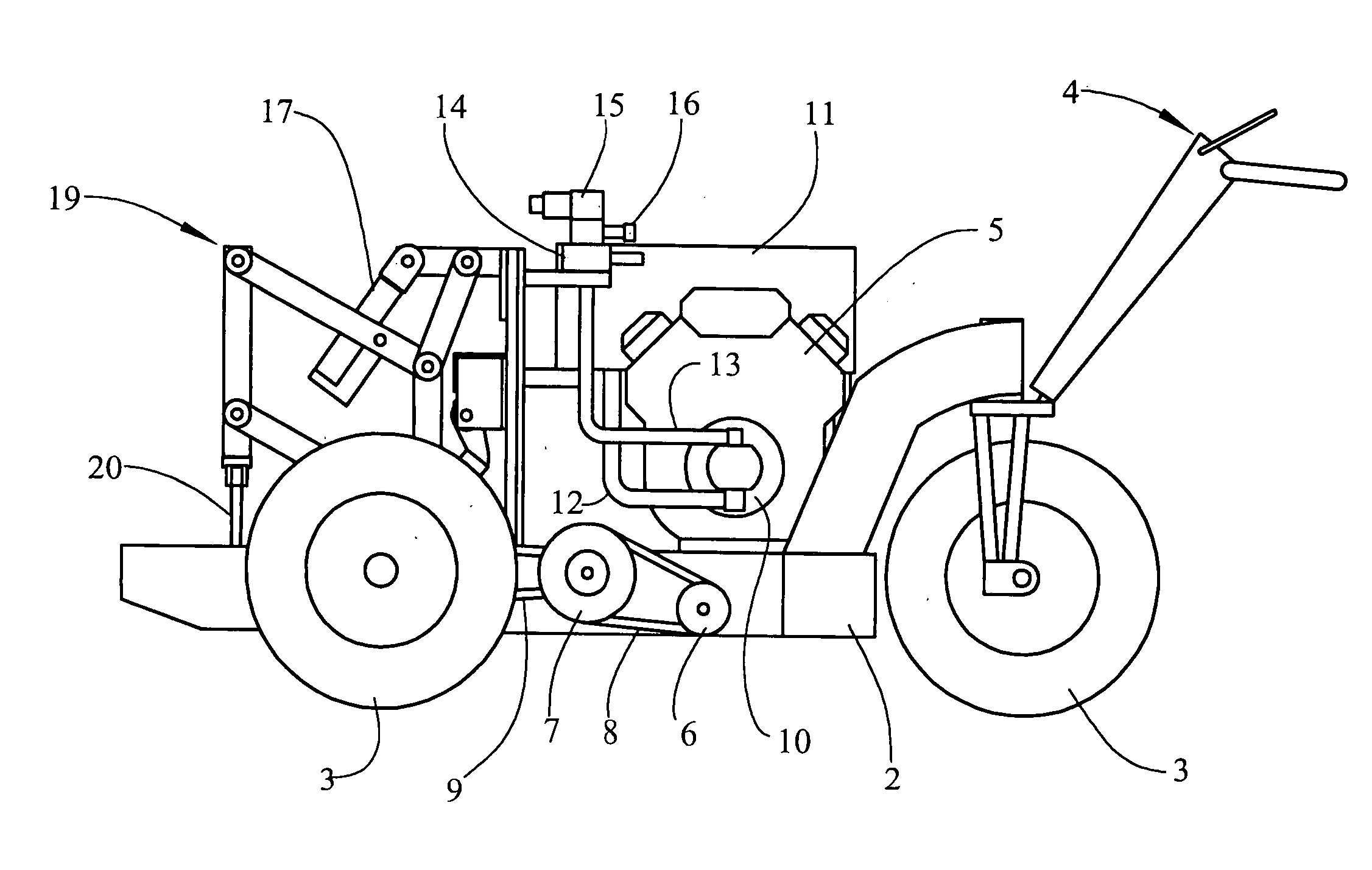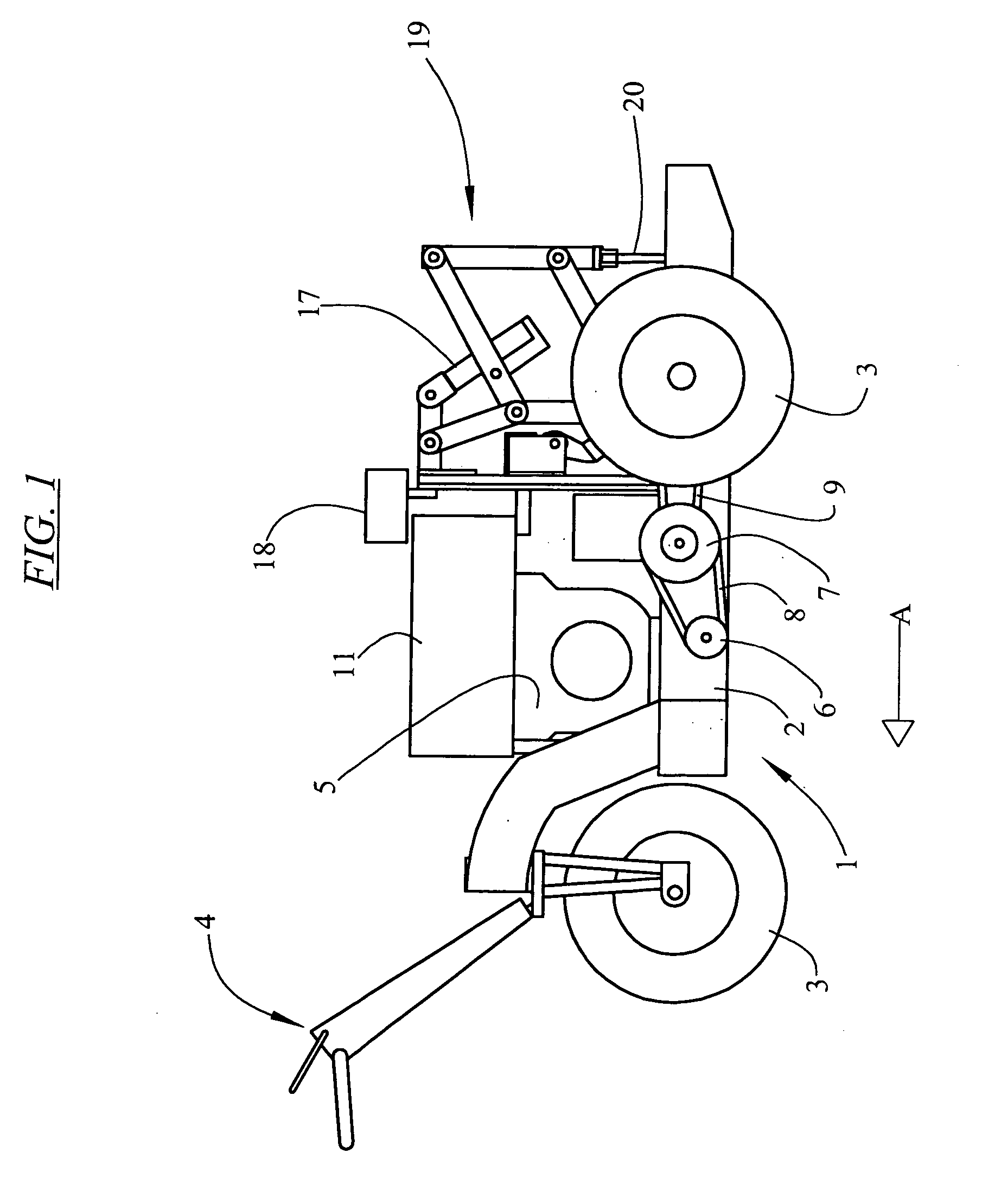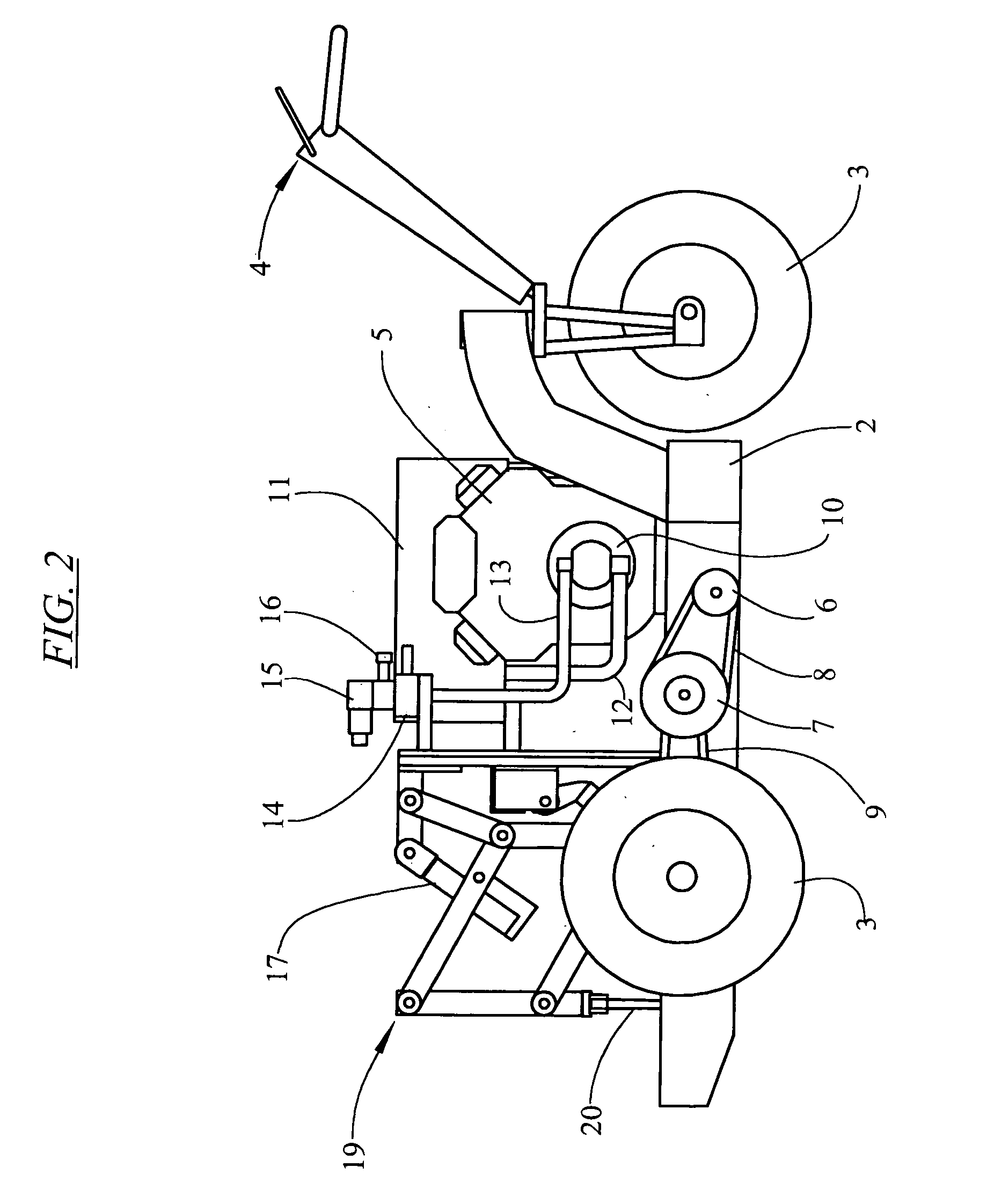Cultivator for aerating a ground surface
a technology for cultivators and ground surfaces, applied in lawn machines, applications, agriculture, etc., can solve problems such as significant affecting the overall, undesirable dimples in ground surfaces, and difficulty in synchronising the speed of hole making tools with the speed of prime mover
- Summary
- Abstract
- Description
- Claims
- Application Information
AI Technical Summary
Benefits of technology
Problems solved by technology
Method used
Image
Examples
Embodiment Construction
[0038] FIGS. 1 to 13 show a cultivating device 1 for aerating ground surfaces according to one embodiment of the present invention. The cultivating device 1 has support frame 2, to which ground engaging wheels 3 are mounted for moving the cultivating device along the ground surface. The cultivator is of the tricycle type with two drive wheels 3 and a steering wheel 3 pivotally mounted to frame 2. A handle arrangement 4 provides for control of the steering wheel 3 by an operator and also provides a convenient location for mounting of cultivator controls (not shown). An engine 5 is mounted on the support frame 2 to drive the cultivating device 1 across the ground via one or more of the wheels 3 and to drive a hydraulic system described below. The drive of wheel 3 is of conventional type through a gearbox (not shown) and appropriate sprockets 6 and 7 and chains 8, 9. This drive system is of the type known to those skilled in the art and will not be described in detail. Arrow A shows th...
PUM
 Login to View More
Login to View More Abstract
Description
Claims
Application Information
 Login to View More
Login to View More - R&D
- Intellectual Property
- Life Sciences
- Materials
- Tech Scout
- Unparalleled Data Quality
- Higher Quality Content
- 60% Fewer Hallucinations
Browse by: Latest US Patents, China's latest patents, Technical Efficacy Thesaurus, Application Domain, Technology Topic, Popular Technical Reports.
© 2025 PatSnap. All rights reserved.Legal|Privacy policy|Modern Slavery Act Transparency Statement|Sitemap|About US| Contact US: help@patsnap.com



